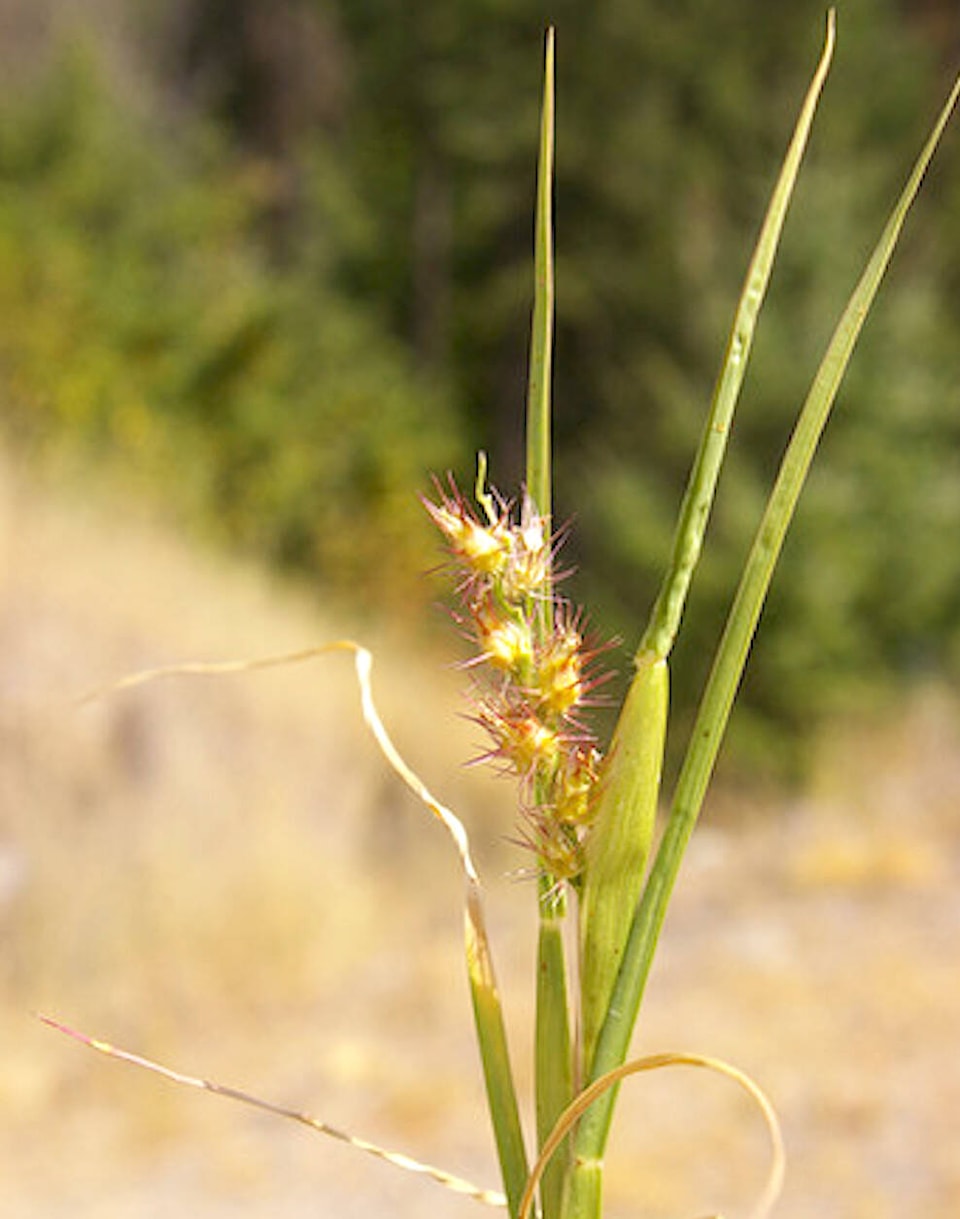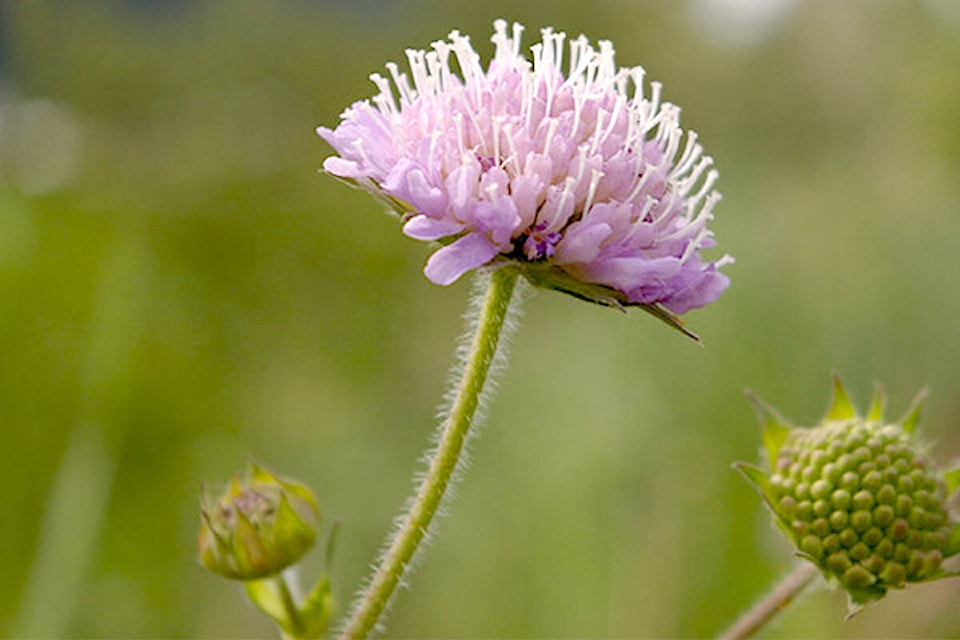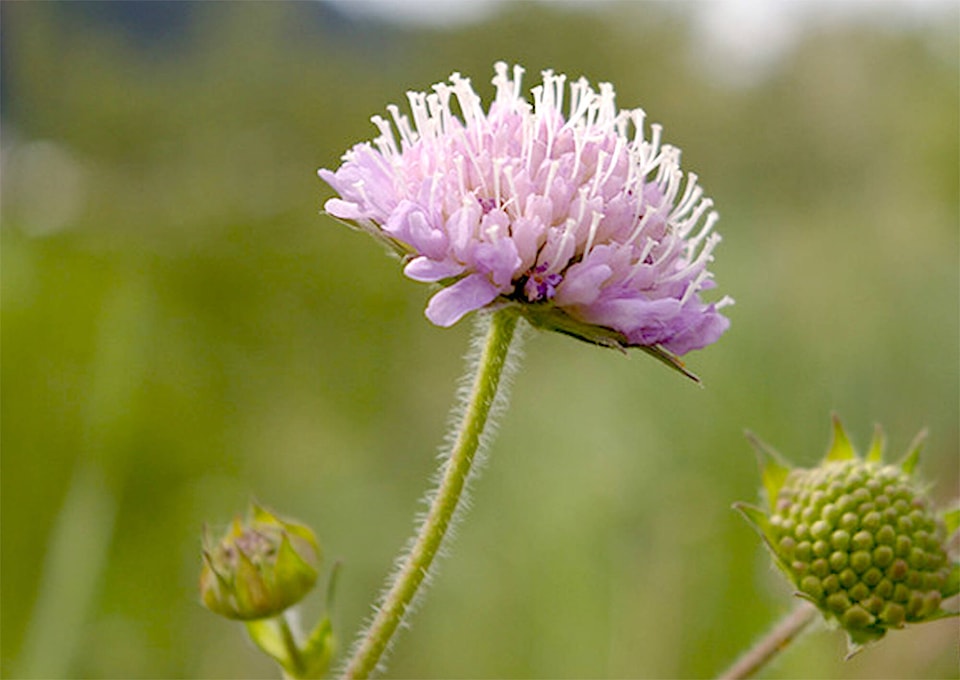Over the course of a few weeks, I am sharing some of the work the Boundary Invasive Species Society (BISS) has done over the past spring and summer.
Whether manually removing invasive species or setting up at one of the local farmers’ markets, we have been working across the Boundary, mitigating the damage caused by invasive species on private property and public land. Surveys and treatment of priority species in the Regional District of Kootenay Boundary’s New Invaders program took us all over the Boundary this year.
Field scabious (Knautia arvensis) was at the top of the treatment list in late June and early July. There is only one known site in the Boundary that has been both manually and chemically treated for 20 years. As with so many other invasive species, field scabious was introduced as an ornamental species. It spread along roadsides and through the range by livestock and wildlife. Boundary Invasive staff spent two days surveying plants and removing flower heads to prevent seed production. A small creek runs through the area and here plants were manually removed. A local contractor then went to the site to treat the marked plants. After so many years of treatment and staff turnover, progress can feel exceedingly slow. Thanks to the data BISS has collected, we know that significant progress has been made!
Scotch thistle (Onopordum acanthium) is a large and prickly problem in the Boundary. When left to their own devices, these thistles can grow to over six feet tall. Leaves are large, greenish-grey and are attached to a triangular stem. To prevent regrowth the whole plant must be removed: the flower heads collected, the stem and leaves chopped up and bagged, and the root dug out. There are sites in the west and east Boundary and BISS is working hard to contain their spread. The seed is parachute-like and can be carried long distances by wind, making early treatment essential. Through June and July BISS treated sites from Grand Forks into Bridesville. As a species under the RDKB New Invaders program, Scotch thistle treatment is free for RDKB landowners!
Longspine sandbur (Cenchrus longispinus) is one of the lesser-known invaders in the Boundary. It is an annual grass that grows small prickly burs which are easily spread by animals and people alike as they easily hook into laces, clothing, and fur. The burs can damage the eyes, feet, mouth and digestive tracts of pets and wildlife. There are only a few sites within the Boundary and each year BISS crews manually remove any plants and seed burs that are present. The larger site in Christina Lake has received chemical treatment as well as mechanical removal, whereas the smaller site in the Rock Creek area has been successfully contained through hand pulling.
The goal with these priority species and others on the New Invaders list is eradication. They are generally species that spread extremely quickly if left unchecked and have significantly negative impacts on ecosystems to which they are not native. By concentrating our efforts now, we save money and resources on the treatment of a larger problem in the future and avoid the economically damaging consequences of these invaders.
We encourage RDKB landholders with any invasive species to take advantage of the funding and services available through the regional district. Visit our website (www.boundaryinvasives.com) and feel free to contact the Boundary Invasive Species Society by email (info@boundaryinvasives.com) or phone (250-446-2232) with any questions!


